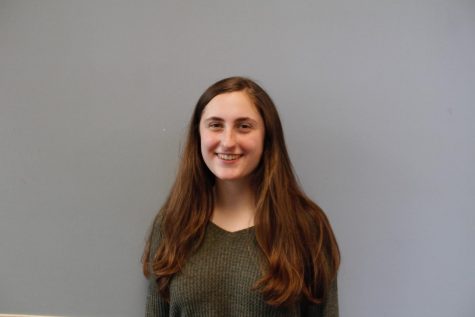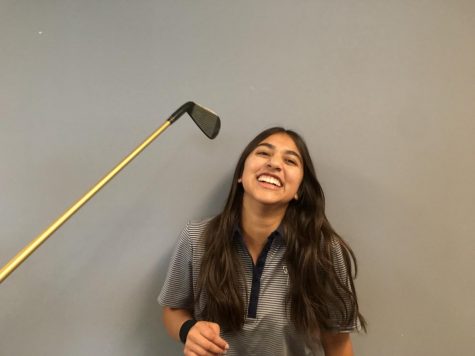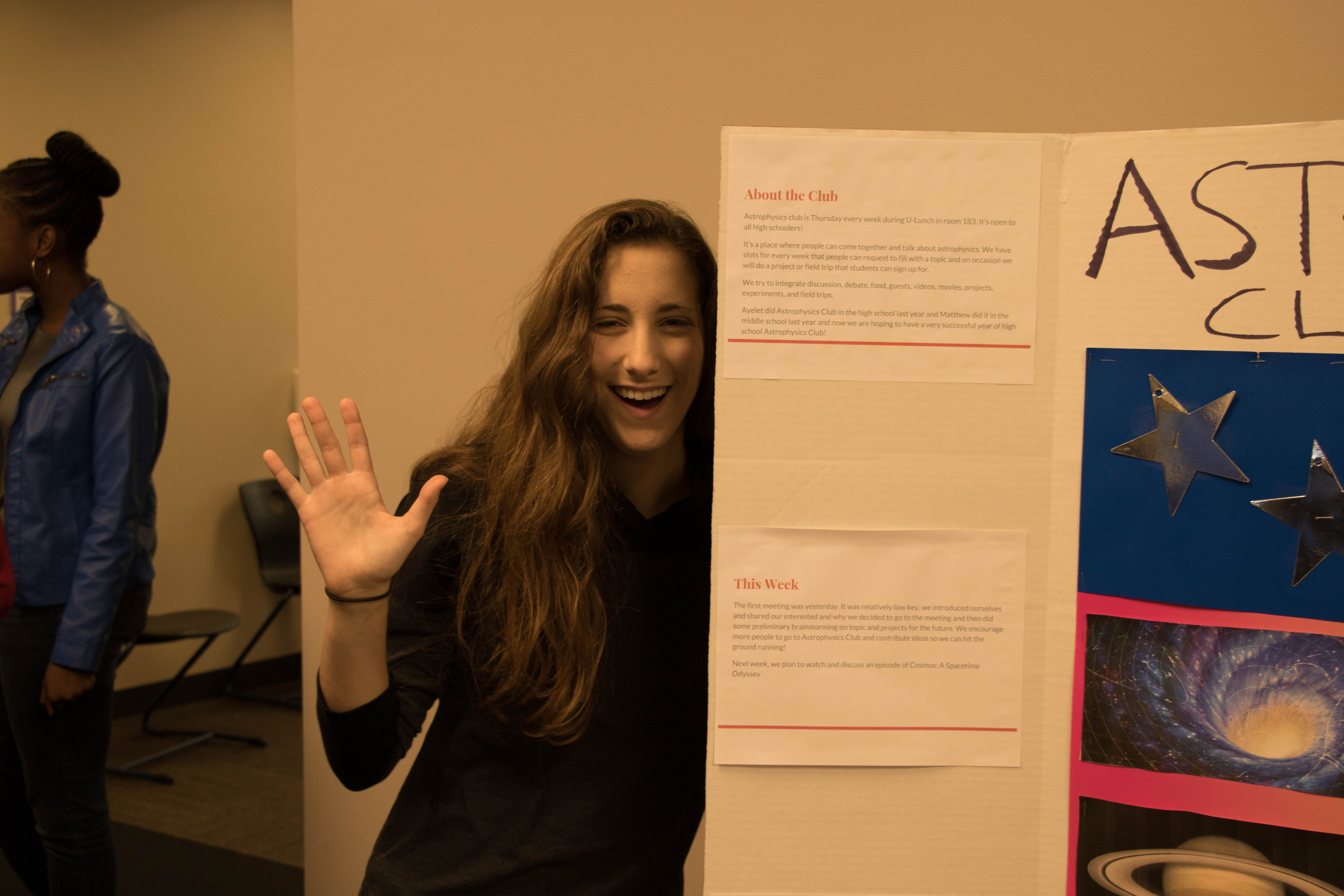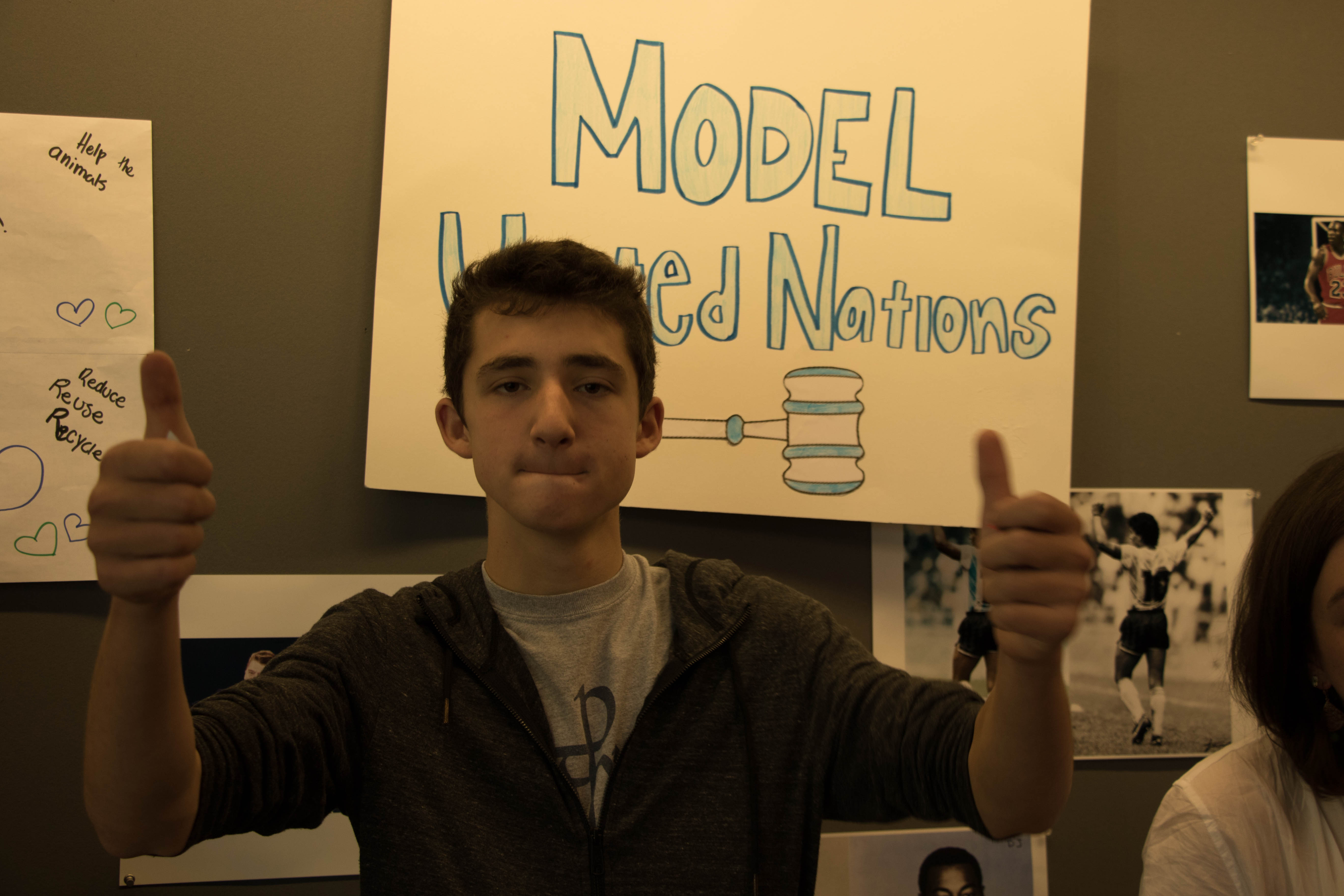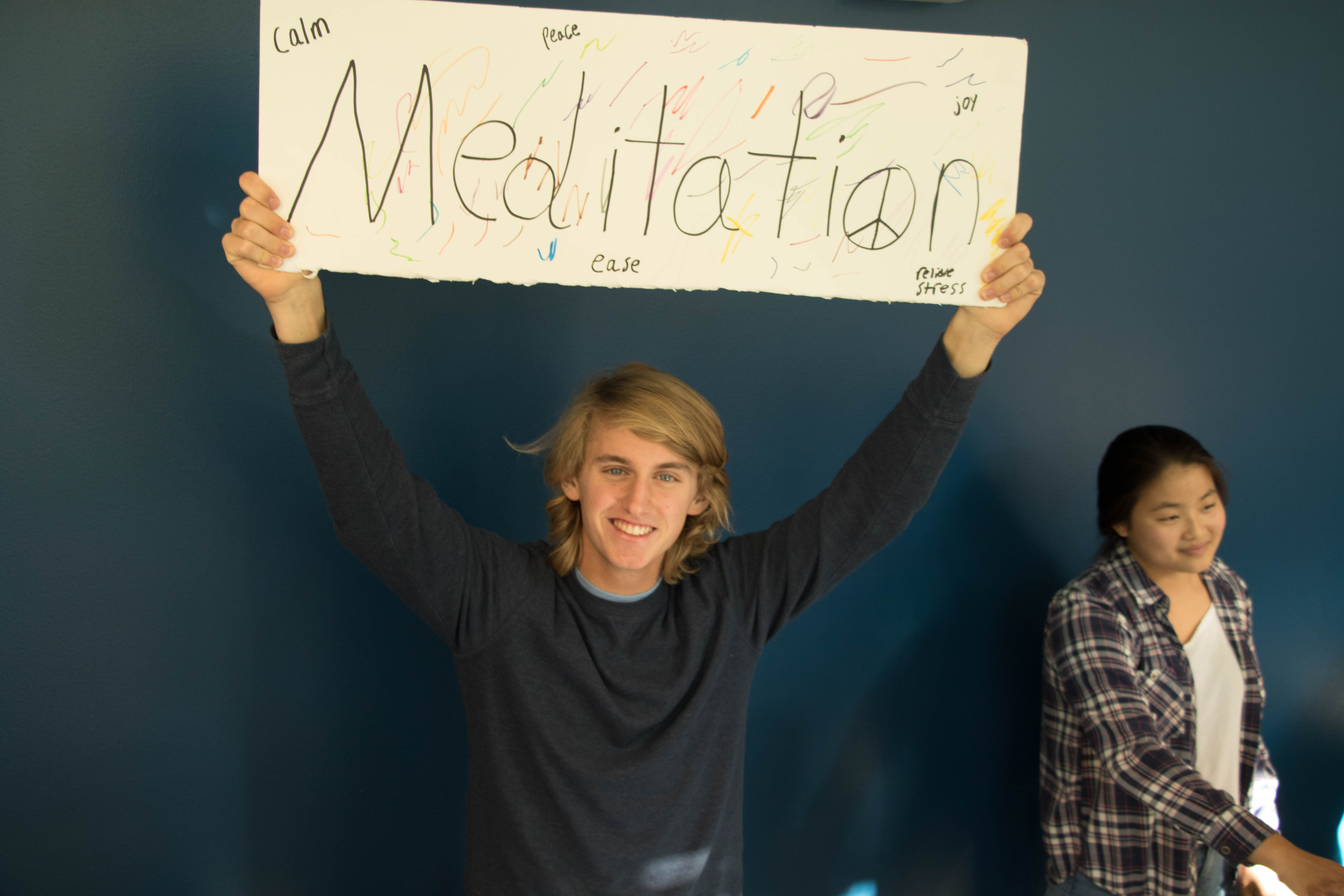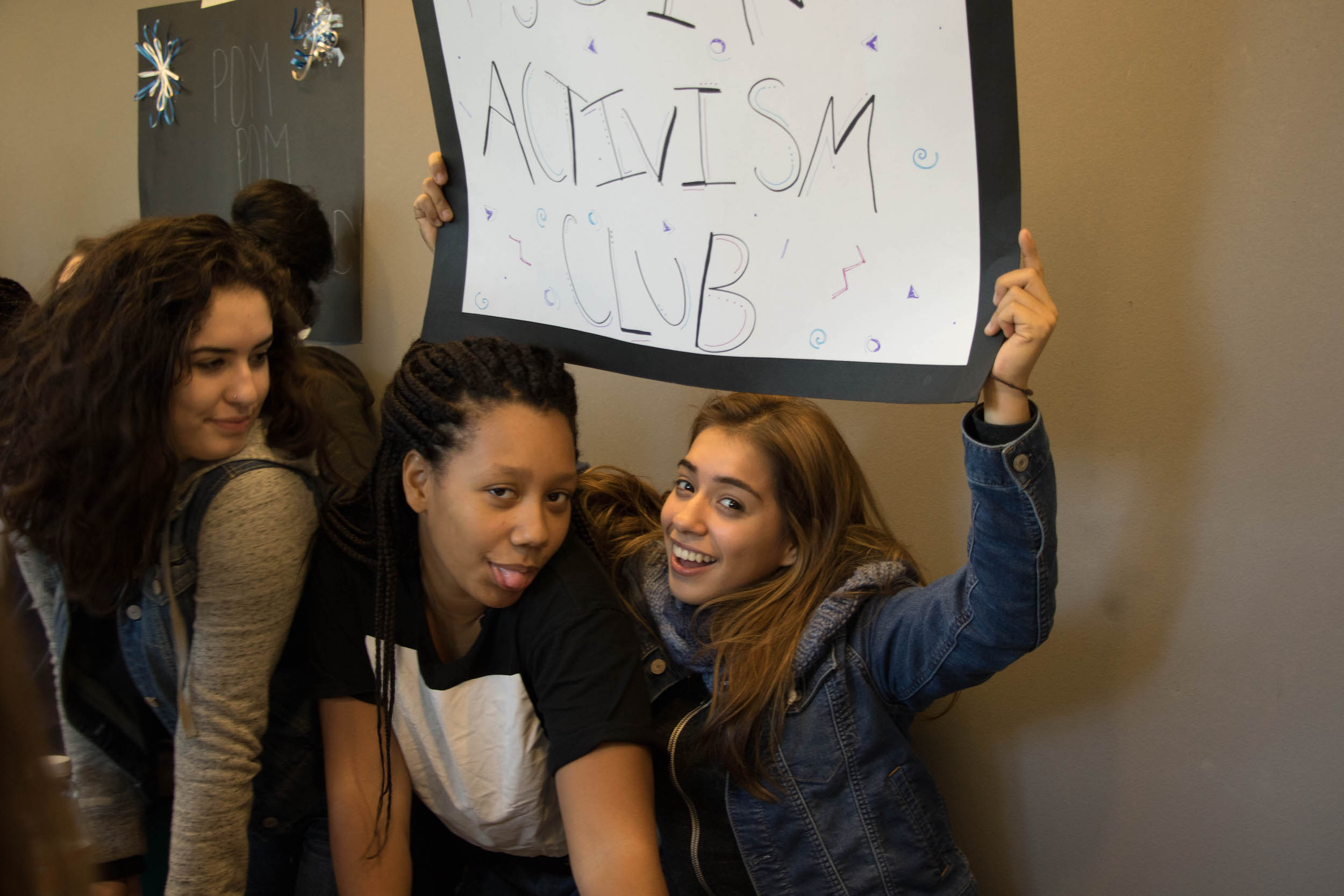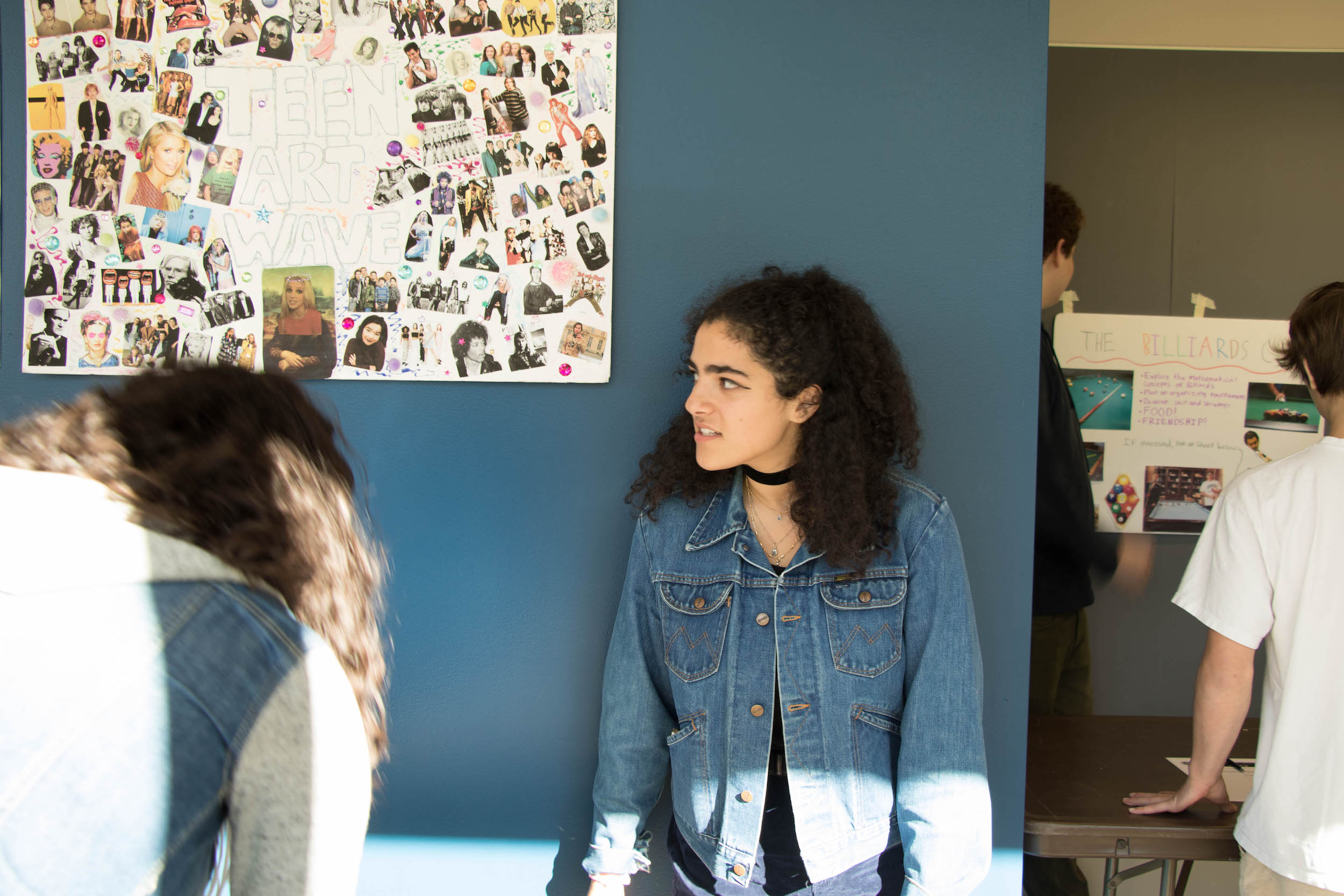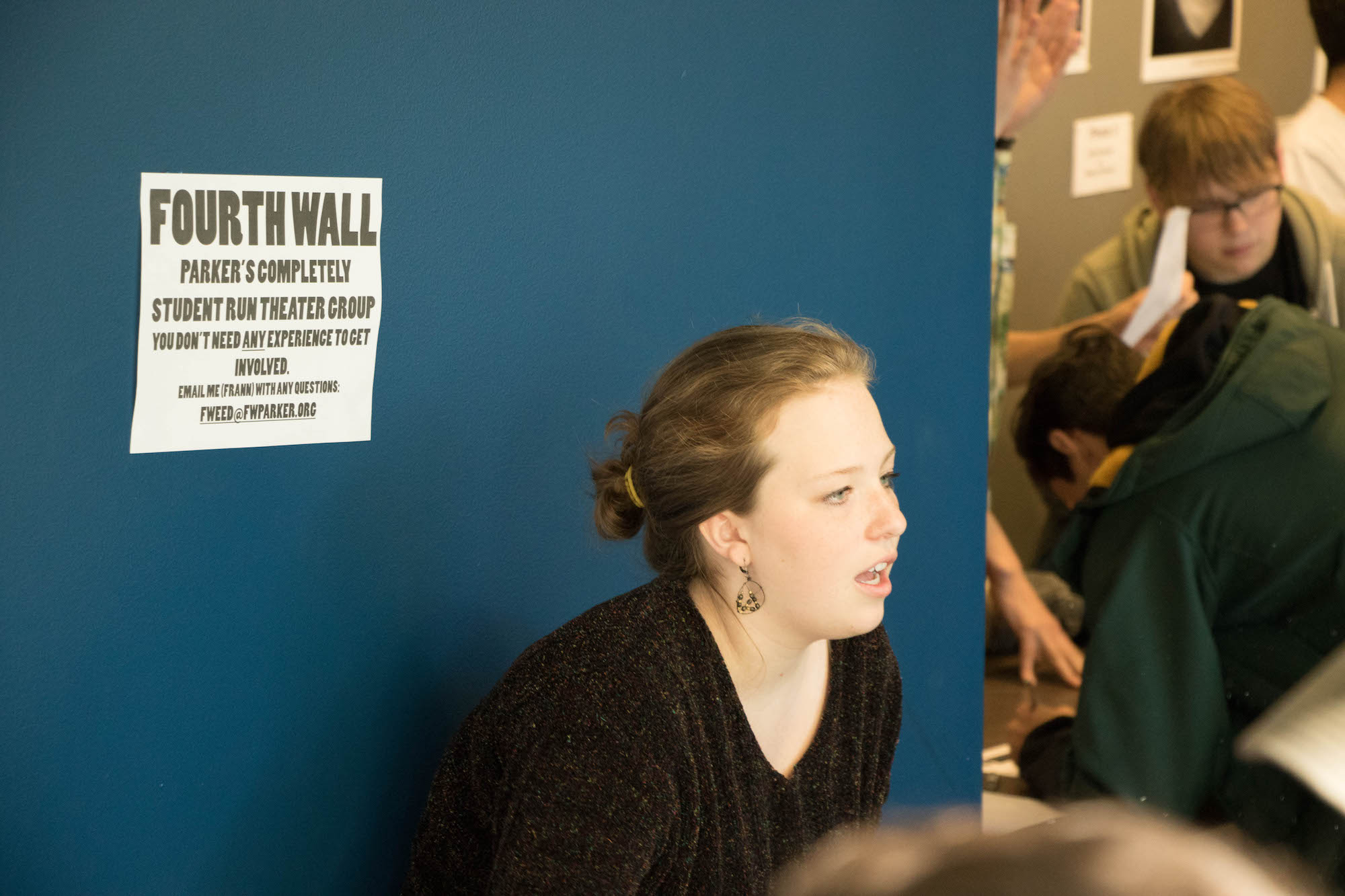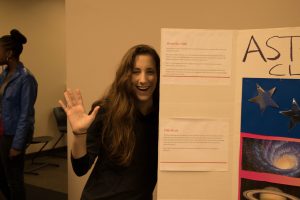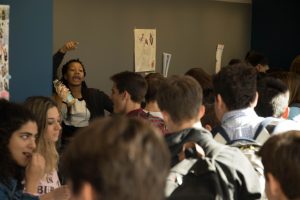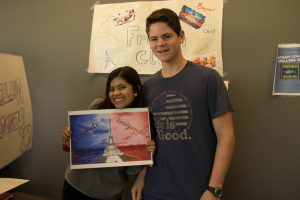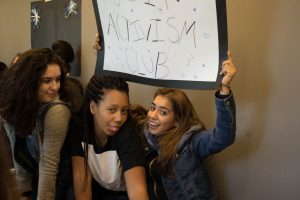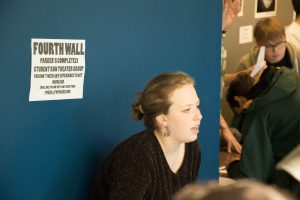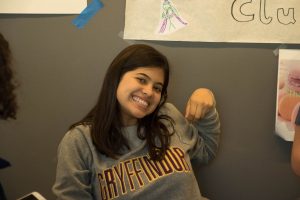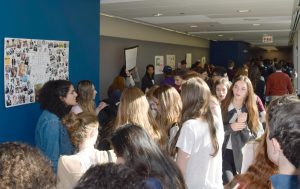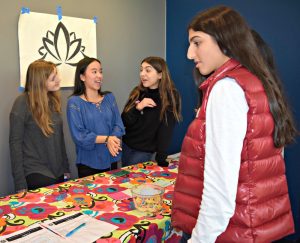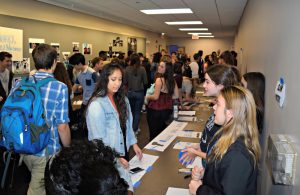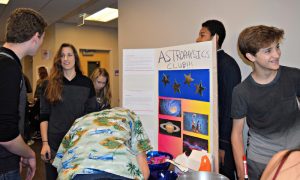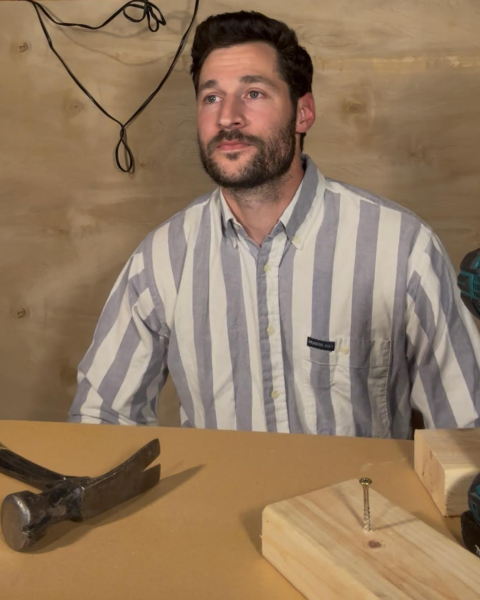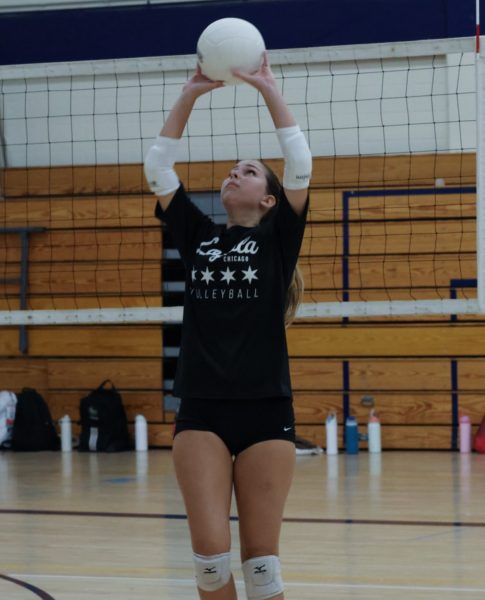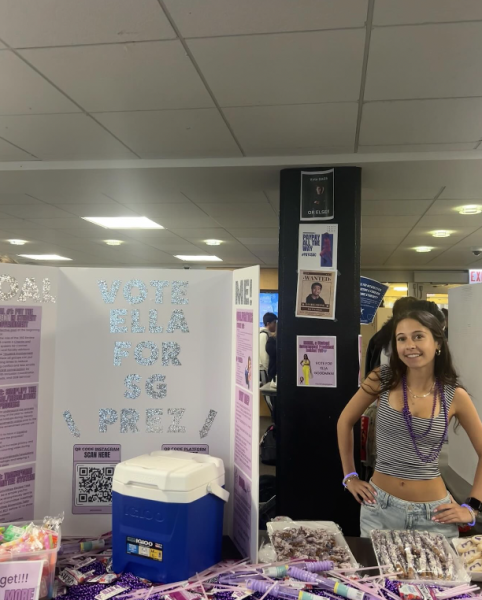ClubFair 2016: Parker’s Newest Tradition
First Annual Club Fair is Part of Initiative to Structure Club Life
A wave of high schoolers floods the North hallway on the fourth floor, which is lined with dozens of folding tables. Bright posters add bursts of color and spirit to the hallway’s plain blue walls. Two or three students stand behind each table, greeting everyone who approaches them eagerly with a smile. Friday, October 21 was Parker’s first Club Fair.
The purpose of the Club Fair was to give students the opportunity to learn about Parker’s different clubs in person, instead of by email. “I think emails can be a great source to get information out, but they’re fairly impersonal,” English teacher and freshman grade head Cory Zeller said. “When you’re walking around a fair, you can meet the club heads, get a sense of what the clubs are about, and see how they’re advertising themselves.”
The Club Fair was also helpful to leaders who wanted to get more people involved. “It gave the club leaders some extra publicity,” Astrophysics Club leader and freshman Matthew Turk said. “It allowed them to get people interested in their club.”
The planning of the fair began in early September. Over the summer, ninth grader Anna Amacher had unsuccessfully searched for a list of clubs she could join in the upcoming year. No one she contacted in the Upper School was able to give her any information because the clubs, they said, were always changing. Dissatisfied, she went to the freshman grade heads, science teacher Ryan Zaremba and Zeller. They connected her with the new Dean of Student Life, Christian Bielizna.
Upon arriving at Parker, Bielizna was also unable to get a list of clubs. He had spoken to Zeller about ways to encourage freshman engagement in clubs and was already developing ideas to organize club life before he met with Amacher. Together, they worked to set their idea of a new, organized club format into motion.
The Club Fair was just one component of the new club structure Bielizna is working to implement. His vision for club life involves two governing bodies of club presidents: the Parker Organization of Clubs and Activities (POCA) and the Club Recognition Board (CRB).
POCA will be a large group comprised of the leaders from official clubs. It will meet to discuss club-related issues and collaborate on ideas to improve the club system. “By having a club that runs the clubs, it gets club presidents interacting with each other,” Bielizna said. “So, say, if they’re a building an event, they can work together and share energies, and move towards a common goal.”
The CRB will be a subset of POCA, consisting of the most dedicated club leaders. Bielizna has not made a final decision as to how the members of the CRB will be selected, but his idea is to hold either an election or an interview based selection process. The CRB will be responsible for evaluating whether or not prospective clubs should be approved for official club status. It will also serve as a liaison for clubs, with officials occasionally attending club meetings and being a resource for other club leaders when they need assistance.
There will soon be requirements that new clubs must follow in order to become official. They must write a mission statement, sign a non-discrimination statement, decide how they will hold fair elections, and format their internal leadership structure.
According to Bielizna, having clubs officially recognized will enable him to grant them benefits that clubs at Parker haven’t received in the past. Clubs will be featured in the yearbook, and although Bielizna cannot guarantee it yet, he wants to allow clubs to apply for funding. Also, by officially recognizing clubs, the school will be able to verify students’ participation when they apply to colleges.
As the new structure unfolds, Bielizna has been encouraging club leaders to give feedback to make this a collaborative process. “I think it is very important that the students have input on what the structure looks like,” Bielizna said. “I don’t want ‘structure’ to be a dirty word.”
Many people have been involved with the development of the new club structure. Amacher has been in communication with many students and teachers across the Upper School to understand their opinions. According to Amacher, she has received very positive responses. Some students did not favor the original set of club rules, so Amacher and Bielizna used their suggestions to tweak those rules into guidelines that will allow more freedom.
Amacher dedicated a number of hours to planning the Club Fair, developing the new club structure, and compiling all of the clubs into a list so now every rising ninth grader will be able to find information about clubs. She has also been creating a master schedule with every club’s meeting times, which will be released later this year. “We’re composing the club system,” Amacher said. “It’s bringing us together, and it’s bringing clubs together. It’ll get underclassmen and upperclassmen more involved.”
Bielizna has a lot of hope in the future of clubs. “Whenever we can foster student-led initiatives, I think, ‘Let’s do it,’” Bielizna said. “I’m really into it, and I’m really excited to see where this leads us.”
